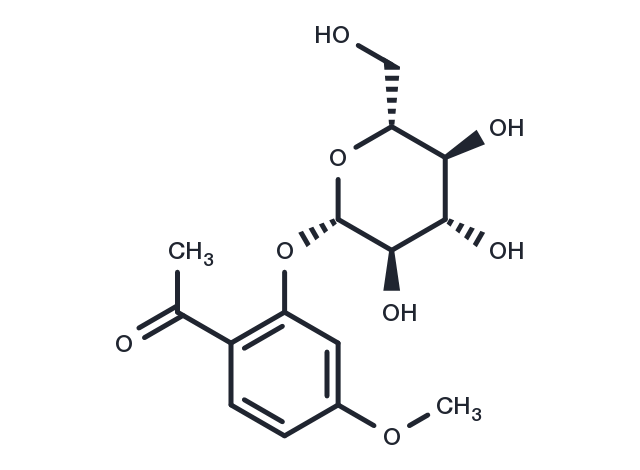store at low temperature
Powder: -20°C for 3 years | In solvent: -80°C for 1 year

Paeonoside, found in P. suffruticosa, is biologically active and can promote wound healing and migration during osteoblast differentiation. Paeonoside has certain antidiabetic activity and may prevent sepsis and death from sepsis. Paeonoside has no cytotoxic effect on preosteoblasts of MC3T3-E1 cells, significantly restores the wound area and promotes cell migration and alkaline phosphatase (ALP) staining and its activity in a dose-dependent manner.

| Pack Size | Availability | Price/USD | Quantity |
|---|---|---|---|
| 1 mg | In stock | $ 195.00 | |
| 5 mg | In stock | $ 490.00 | |
| 10 mg | In stock | $ 715.00 | |
| 25 mg | In stock | $ 1,090.00 | |
| 50 mg | In stock | $ 1,480.00 | |
| 100 mg | In stock | $ 1,980.00 | |
| 1 mL * 10 mM (in DMSO) | In stock | $ 482.00 |

| Description | Paeonoside, found in P. suffruticosa, is biologically active and can promote wound healing and migration during osteoblast differentiation. Paeonoside has certain antidiabetic activity and may prevent sepsis and death from sepsis. Paeonoside has no cytotoxic effect on preosteoblasts of MC3T3-E1 cells, significantly restores the wound area and promotes cell migration and alkaline phosphatase (ALP) staining and its activity in a dose-dependent manner. |
| In vitro |
Paeonoside (0.1-100 μM, 24 h) exhibited no cytotoxicity towards MC3T3-E1 pro-osteoblasts cells, even at concentrations ranging from 0.1 to 100 μM, when treated for 24 hours.[1] When MC3T3-E1 preosteoblasts were induced to differentiate using osteogenic supplement (OS) medium, treatment with PASI (1-30 μM, 24 h) significantly enhanced wound area restoration and facilitated cell migration in a dose-dependent manner. Furthermore, PASI demonstrated a dose-dependent promotion of alkaline phosphatase (ALP) staining and activity.[1] |
| Molecular Weight | 328.31 |
| Formula | C15H20O8 |
| CAS No. | 20309-70-0 |
store at low temperature
Powder: -20°C for 3 years | In solvent: -80°C for 1 year
DMSO: 22.5 mg/mL (68.53 mM)
You can also refer to dose conversion for different animals. More
bottom
Please see Inhibitor Handling Instructions for more frequently ask questions. Topics include: how to prepare stock solutions, how to store products, and cautions on cell-based assays & animal experiments, etc.
Paeonoside 20309-70-0 Others 2 Acetyl 5 methoxyphenyl β D Glucopyranoside 2Acetyl5methoxyphenyl βDGlucopyranoside inhibitor inhibit
